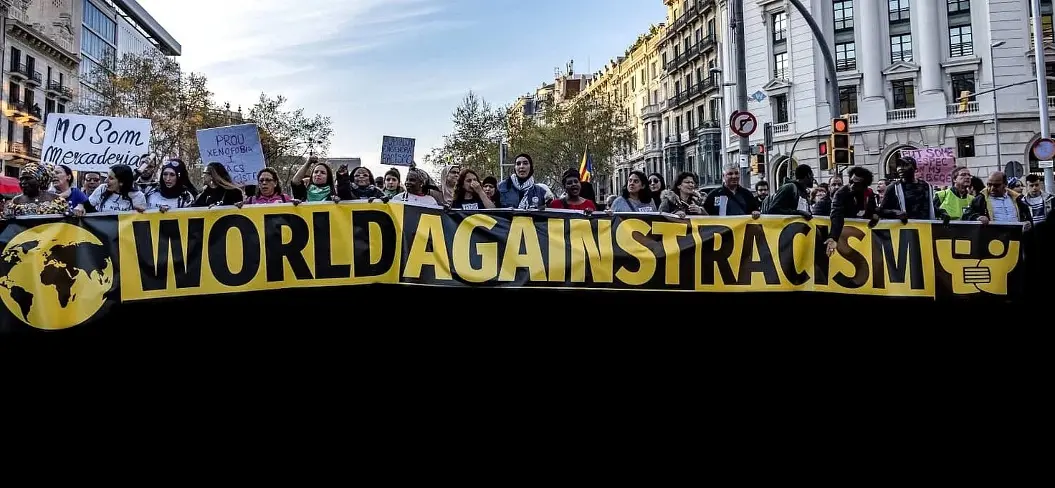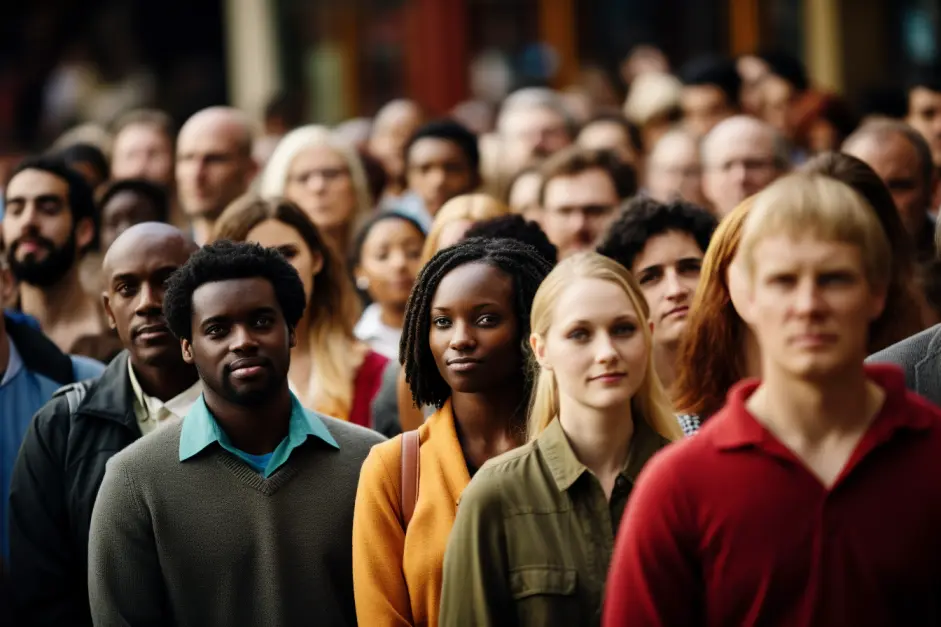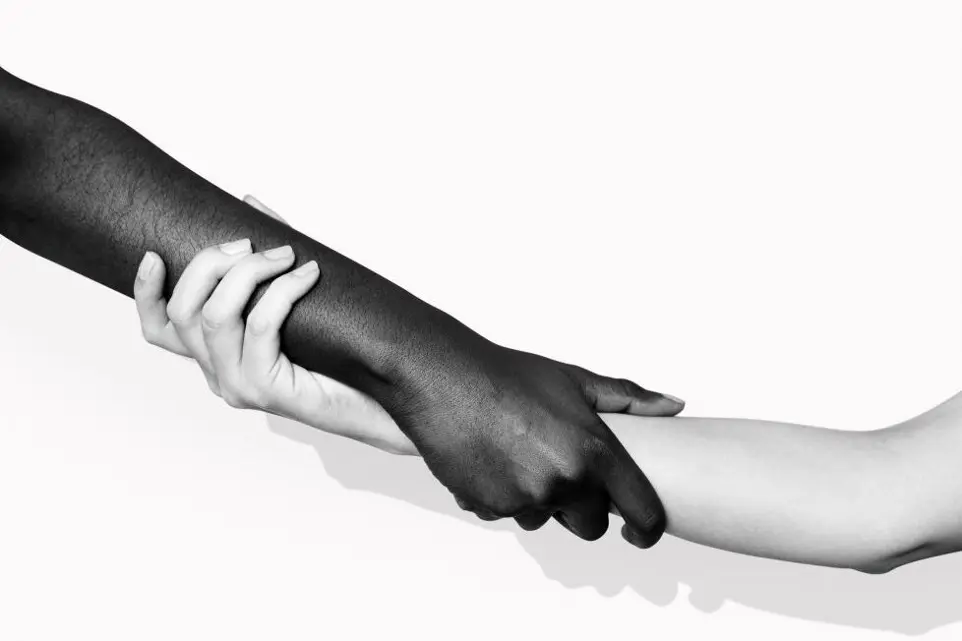RACISM
Racism is a feeling or behavior that consists of exacerbating the racial sense of an ethnic group. This situation usually manifests itself as contempt for another group and is a form of discrimination. Racism can be presented as an anthropological or political doctrine that includes the persecution of ethnic groups considered inferior. That's what happened with Nazi Germany or the Ku Klux Klan in the United States.
Racial discrimination is the exclusion or preference of people due to issues related to their race. This distinction implies that some individuals see their rights violated. Racial discrimination can be associated with racism, which is based on the belief in the superiority of one ethnic group over the rest. It is also often linked to xenophobia: the rejection of foreigners.
- WHAT IS RACIAL DISCRIMINATION
Racial discrimination consists of providing different treatment to a community or a subject due to their biological or cultural characteristics. Although the concept of race is no longer usually used because throughout history it was used to stigmatize and generate social hierarchies, it is usually linked to skin color and other visible traits.
Since there is no precise delimitation of racial groups, this type of discrimination is based on a series of stereotypes and prejudices. The racist attributes certain characteristics to the members of a community due to their appearance, their traditions or their culture, marginalizing and persecuting said people because they are considered inferior or even harmful. We cannot fail to mention that all human beings, in addition to belonging to the same species, are 99.9% equal on a genetic level. It is important to indicate that racial discrimination can manifest itself in different ways. It is expressed through verbal violence or other symbolic attacks, but also leads to physical attacks, murders and, when promoted by the State, even extermination plans.
- FROM MICROAGGRESSIONS TO GENOCIDE
It is necessary to understand that racial discrimination is always harmful and dangerous. Beyond the different scope of intolerance, with greater or lesser severity, it is essential to combat it. That is why microaggressions must be condemned: those subtle behaviors that spread prejudice towards a community. These practices sometimes materialize through supposed humorous content or comments that seem irrelevant but have a symbolic meaning.
The aggression can also be direct, with insults or hits. In such cases it is already a crime. The situation becomes more complex when there is structural racism and institutional discrimination: thus, hatred is endorsed socially or even by the government. In the most disastrous episodes of humanity, racial discrimination led to genocide: the planned and systematic extermination of a population. That was what happened with the Holocaust, when Nazism massacred Jews, Gypsies and other groups.
- EXAMPLES OF RACIAL DISCRIMINATION
Unfortunately, throughout history and even in the present, examples of racial discrimination abound. Despite the efforts of the civil rights movement to eradicate inequality, racist behavior was and is common in much of the world. We can find everyday examples of racial discrimination when immigration is blamed for various economic or social problems. Sometimes it is argued that people of other nationalities who enter a country without documentation generate damage to the economy, without taking into account that they contribute to local wealth in different ways (with their labor force or paying taxes on each product they buy. , to mention two factors).
Racial discrimination also appears when there is no equal opportunity since certain groups have difficulties accessing employment. This particularity condemns the members of the group to poverty. If we focus on anti-Semitism, it is evident that stigmatization continues to weigh on the Jewish people when its members are associated with greed or stinginess. In fact, the Royal Spanish Academy (RAE) recognizes a discriminatory meaning of the adjective Jewish, associating it with usury and greed.
Analyzing historical events, the regime of racial segregation known as apartheid legalized discrimination of this type in South Africa for several decades. Whites, a minority in that country, had multiple privileges compared to blacks. Only at the beginning of the 1990s was the legal system that supported this discrimination dismantled.
Racial discrimination, on the other hand, is a social problem with a long history in the United States. Groups that defend white supremacy, such as the Ku Klux Klan, carry out various types of attacks against people of African descent. Although the Ku Klux Klan and other related movements are a minority, racial violence often emerges. In 2014, after the murder of African-Americans Eric Garner and Michael Brown by police officers, the Black Lives Matter movement emerged, which, with demonstrations and protests, called for an end to discrimination.
- THE IMPORTANCE OF ACTIVISM
Activism has been key in the fight against racial discrimination and, as can be seen with Black Lives Matter, it continues to be so. Millions of anonymous people made their contribution to change reality, while several civil rights leaders and personalities went down in history for their social impact in combating ethnic, religious and racial discrimination.
Martin Luther King Jr, Rosa Parks and Malcolm X, among others, are recognized for confronting racism. Each one with their methods and actions managed to highlight and denounce racial injustices.
The extermination of attacked groups or the cancellation or reduction of the human rights of discriminated subjects are part of the objectives and consequences of racism. For many years in South Africa, the black majority was subject to the white minority. Racism manifested itself in all areas of daily life. This phenomenon of racial segregation, known as apartheid, included special places for blacks on buses, hospitals, and public parks. In this case, racism was established through institutional discrimination, promoted by the State.
It is common for racism to be justified by pseudo-scientific theories or to be supported by the manipulation of statistical data. An example of this is arguing the superiority of the white race or white supremacy based on their academic results, without taking into account that black children often suffer from social problems that prevent them from achieving their full potential. Regardless of his or her race, a person who does not eat properly, who does not have access to health services and who lives in a precarious home cannot use all his or her faculties to achieve satisfactory performance in his or her studies.
It should be noted that racism can be linked to other manifestations of hate, such as xenophobia (hostility towards foreigners), anti-Semitism (the persecution of Jews) or homophobia (the attack on homosexuals). Also, when race is associated with a nation, it is usually related to an exacerbated nationalism.
Racism is based on intolerance. Racists, based on prejudices and stereotypes, promote racial discrimination against certain groups. Sometimes the object of hatred is an ethnic minority. However, racism can be exercised by a minority group against a much larger community (as occurred in South Africa during apartheid).
It must be considered that racism takes shape in different ways. There are microaggressions that are almost naturalized, such as teasing or derogatory comments. In other cases, violent oppression is promoted that aims at exclusion and elimination. An extreme version of racism (and anti-Semitism) was Nazism, which carried out genocide.
- RACISM THROUGHOUT HISTORY
Racism is not modern behavior. During the era of colonialism in America, for example, each indigenous people suffered racism from the conquerors, who built regimes centered on white privilege and inequality. Thus, the dominant (European) culture imposed a displacement of the aboriginal communities. Racial violence was part of that advance on the territory.
The history of slavery also reflects racism. White nationalism in the United States, alluding to a supposed racial supremacy, subjugated the black population for a long time. The growth of the civil rights movement was essential for the abolition of slavery and the end, at least in part, of the marginalization of African Americans. Beyond the aforementioned cases of South Africa, the Ku Klux Klan (which we will expand on below) and Nazism, contemporary history and even the present show racist components. Ethnic and racial persecution never completely ceased, as demonstrated by the Black Lives Matter movement that emerged in 2013 in the United States to defend the rights of the black community.
- THE CASE OF THE KU KLUX KLAN
The Ku Klux Klan is the name given to several far-right groups with a presence in the United States, which were founded last century, just after the Civil War had ended. This disastrous sect supports all existing forms of racism, such as xenophobia, anti-Semitism and homophobia, although it is especially known for its hatred of the black race. Among their practices to "communicate their ideas" are terrorist attacks, armed robberies and acts of great symbolism such as burning crosses.
From the beginning of its history, in the second half of 1865, the Ku Klux Klan based its operation on violence. It is worth mentioning that he did not remain active for long: half a decade later, a movement against him for anti-racist activism led to his first dissolution, which was reflected in a civil rights act. However, in 1915 the second generation of this group began, which had a more sophisticated organization, including formal memberships and a national expansion that reached close to five million participants.
Although the second era of the Klan enjoyed more longevity than the first, the support that some of its members showed for Nazi Germany towards the mid-20th century marked the beginning of its decline. Many organizations have adopted the same name since then, and they all have in common the ruthless nature of their behavior, which is why they are considered extreme hate groups. The original KKK, on the other hand, no longer has more than a few thousand members.
In recent decades, numerous authors have captured the atrocities to which the Klan subjected its victims since its conception in a variety of books and films; Likewise, his actions are repudiated by journalism in general and by various public institutions.
There are racist movements, on the other hand, that postulate racial supremacy. According to this position, there are superior races that are called to dominate and inferior races that must be maintained in a position of subordination. White supremacy, in this framework, maintains that white people have to subjugate those who belong to other ethnicities, since white people are superior to the rest. This racism was practiced in the United States for a long time, when non-whites were forced into slavery and lacked many basic rights.
Throughout human history, racial supremacy has taken different forms, although all of them have been regrettable and unjust. It is worth mentioning that terms associated with colors are often used that do not even accurately reflect the tones of our skin: no one is really white, black, yellow or red. There is also no one who has only one color skin. Based on these issues alone, discrimination should not be sustained. However, hate can become stronger than reason.
Beyond the immense damage that discrimination causes, one of its worst characteristics is that it can be carried out in silence, without giving obvious signs. Racial supremacy often manifests itself with invisible barriers to those who were not born with a certain race, leaving them out of job or student opportunities or even denying them the purchase of a home.
Male supremacy, meanwhile, defends the preeminence of men over women. Known as machismo, it implies conceiving the man as the head of the family groups (and, by extension, of society). Like any other type of discrimination, it is based on absolutely arbitrary concepts, since nature does not lead us through genetics to treat someone badly because they do not look like us, because they have other ideas or because they are of the opposite sex. Another point in common with the rest of the discriminatory movements is that it can cause a wide degree of damage to the victims, from unpleasant moments that make them cry to driving them to suicide, without leaving aside the cases in which the perpetrator is the one who harms them. He takes the life of his victim based on his unfounded contempt.
We cannot say that male supremacy is a simple phenomenon, but rather it can take many forms and affect both women and men themselves. It is important to highlight that this form of discrimination does not benefit all human beings who were born male, but only those who follow a series of rules or social norms. In other words, a homosexual or transsexual boy is not considered part of this "privileged group", but rather another opponent, to whom abuse also occurs.
Racism and racial discrimination are problems that affect millions of people around the world daily. The belief in the superiority of one ethnic group over others leads to discriminatory practices or social persecution. This phenomenon is reflected in attitudes and manifestations that proclaim the inferiority of certain ethnic groups or the superiority of one's own, based on characteristics such as skin color, language or place of birth. Racism has varied throughout history and has been influenced by the culture and social factors of each country, but the common denominators have generally been social segregation, discrimination and rejection of culture and values of other groups.
Since its founding, the UN has taken an active approach to addressing racism and racial discrimination, with its prohibition being a fundamental principle enshrined in international human rights instruments. By ratifying these instruments, States assume the responsibility of eradicating this discrimination and undertake to implement special measures to combat the conditions that generate or perpetuate it.
Despite progress in the fight against racial discrimination, there are still significant challenges, which is why it is crucial to continue working towards a more just society that recognizes that its eradication is a shared responsibility. Currently, racism and discrimination continue to manifest in complex ways, permeating all major aspects of daily life. Here are some examples of how it can harm affected people:

 IHRO NEWS
IHRO NEWS


